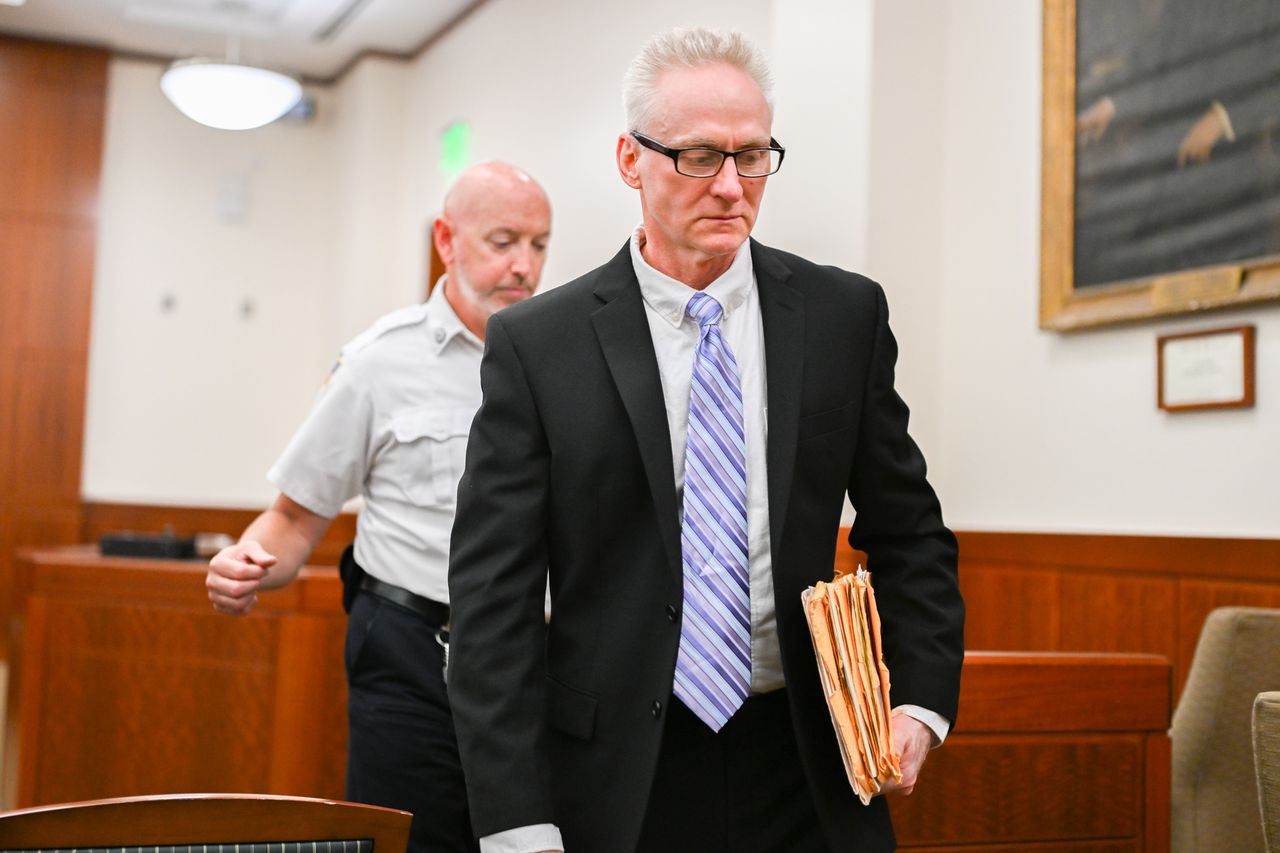Blood
Stains, DNA evidence under scrutiny in Foley trial as defense questions testing reliability
When Worcester Police searched the Northborough home where Steven Foley lived, chemical tests revealed the presumptive presence of blood on the floorboards, according to testimony in Foley’s murder trial in Worcester County Superior Court Tuesday.
Worcester Police Sgt. Eric Boss testified he executed multiple search warrants in the wake of Cynthia Webb’s death in 2017.
Webb was found dead and burning in a car in Hope Cemetery in Worcester the morning of Dec. 12, 2017. Foley is charged with murder and malicious damage to a motor vehicle.
While evidence on Monday, the first day of Foley’s trial, largely concerned timeline evidence, testimony Tuesday centered on physical evidence, including blood testing and DNA testing.
Boss told the jury that in two searches of 76 Shady Lane, where Foley lived with his girlfriend, chemical tests returned a presumptive positive for blood on the floorboards.
When Assistant District Attorney Brett Dillon asked if Boss noted any particular patterns in the luminescent patterns revealed by one test, Boss said there appeared to be swirls as if someone had attempted to clean the area.
Under cross-examination Boss testified that a subsequent test, meant to confirm whether blood evidence is human, did not return a positive result. Boss said the Worcester Police Department has since stopped using that subsequent test, and now if an item returns a presumptive positive test for blood, it’s sent to the state crime lab for further testing.
Boss said tests of the bedding, mattress and box spring did not return positive results for blood, but that another test on the wheels of the bed frame also returned a positive result.
Boss said following those tests, police removed several segments of floorboard, many of which showed red-brown staining between the boards.
- Read More: Cynthia Webb’s former coworker said accused murderer offered her cocaine before
Worcester Police Sgt. Elise Miranda, who worked in the department’s crime scene unit at the time, testified she tested stains from many of the floorboards at the department’s laboratory, and her tests also returned a presumptive positive result for blood.
Defense attorney Sarah Hamilton questioned Miranda, attempting to establish that Miranda was not present when the floorboards were removed, and that they had been provided to the WPD lab loosely stacked in a box meant for storing rifles.
Lindsey Bird, a forensic scientist at the Massachusetts State Police crime lab, testified that she analyzed a swab taken from the stain in one of the floorboards, and that the profile matched Webb, with less than a 1-in-42-nonillion (a number with 30 zeroes) chance it could be from another person.
Bird also testified the sample contained DNA from a male, but that male was unidentifiable due to the small size of the sample compared to the amount of female DNA.
Hamilton questioned Bird regarding the multiple ways a DNA sample could end up between two floorboards — skin cells, saliva, vomit, DNA from one person transferring to another person then being deposited on the boards.
Following that line of questioning, Bird testified that, based on her training and experience “when we test a swab from a red brown stain that is presumed to be blood … we get the DNA from the stain and not the material that was around it.”
- Read More: Steven Foley trial: Defense suggests drugs may have killed Cynthia Webb
The day’s previous evidence included testimony from Jason Prashaw, Foley’s next door neighbor in Northborough, who said the night of Dec. 11 and the morning of Dec. 12 he noticed an unfamiliar maroon car in Foley’s driveway, and as he left for work later on the morning of the 12th, saw Foley returning toward his home.
Ricardo Leal, a custodian of records with T-Mobile, testified regarding cell phone evidence and identifiers unique to Foley’s contract and cell phone, which paved the way for intelligence analyst Lisa Schultz.
Schultz, using a mix of surveillance videos and cell phone data provided by Worcester Police, showed a 45-minute video interspersing the cell data with individuals and vehicles shown on the videos.
Schultz said the data showed Foley’s cell phone active in zones that corresponded to Mario’s Showplace in Webster, where Webb worked as a dancer — where video showed a man she identified as Foley interacting with a woman she identified as Webb — as well as coinciding with an area near Hope Cemetery shortly after firefighters responded for the reported burning car, and when taxi company workers said Foley requested a ride to Northborough.
Other cell data showed Foley making a call from the Northborough area in the early-morning hours of Dec. 12, 2017, also coinciding with when a taxi driver said he was called to pick Foley up and drop him off near the Lamplighter club in Worcester. Surveillance video showed one car arriving at that club the evening of Dec. 11, and two people switching places in a different vehicle and driving off that same evening.
Testimony resumes Wednesday morning.

